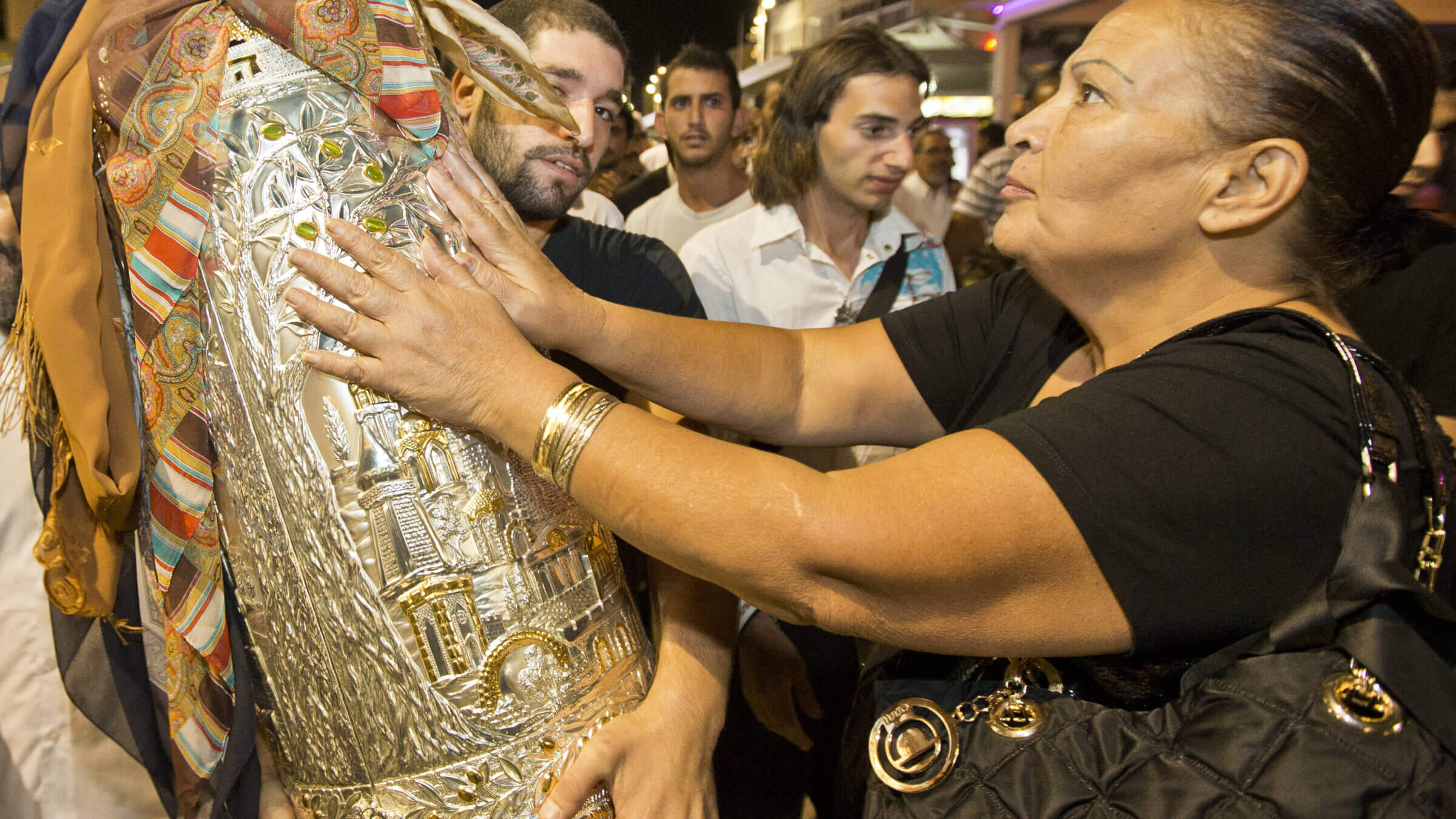Simchat Torah is the best Jewish speed-dating event
The city’s Jews gather for drunk, mixed dancing — what could be more romantic?

Simchat Torah in Netanya Courtesy of Getty Images
Tu B’Av is supposed to be Jewish Valentine’s Day. But really, the day to meet your future spouse — or your ex, or your current partner’s ex, or anyone you’ve ever had a crush on — is Simchat Torah.
The final day of the autumn Jewish holidays, Simchat Torah marks the end of the yearly cycle of Torah readings called the parsha. Congregations read the last portion of Deuteronomy, then go back to the beginning of Genesis.
This is not obviously a romantic occasion.
But part of the celebration of the parsha cycle includes singing and marching the Torah around the synagogue in an often raucous, ecstatic dance that can spill onto the streets. (There’s also usually a lot of booze.) It’s contagious and joyful, and the perfect place to meet your beshert.
The holiday is, even in its most traditional roots, about love — of Torah, but also of community and of the Jewish people. It seems only natural to also find love for a specific Jewish person on the same day. Communal religious experiences were, after all, developed as a way to create feelings of connection to God, to community, so why not to your future spouse?
Temple Beth Shalom — fondly known as the Tremont Street shul — in Cambridge, Massachusetts, was my graduate school synagogue, and I still trek back for its famed Simchat Torah celebrations, which sometimes draw over 1000 people. It’s the ultimate place to see and be seen in the Boston Jewish community.
Every minyan comes together — as do several other congregations in Cambridge and Somerville, who all bring their Torahs over to join in with the festivities. Since the 1970s,Harvard and MIT’s Jewish undergraduate and graduate students have also made the trek to celebrate on Tremont Street and boost the pheromone quotient.
The police shut the block down and the people circle each Torah, belting out celebratory songs. (It’s not too hard to manage to end up holding hands with your crush as you dance the hora.) Unlike many Jewish rituals, Simchat Torah is uninhibited and light on structure, with fewer words to know or prayers to mumble through. It’s easy to fit in and be welcomed as a Jew of all experience and observance levels; the songs are repetitive and largely formed of nonsense syllables, so all you have to do is follow the crowd.
Then you take a break, sit on the steps, and, at least in times before COVID, pass around flasks and jars and even entire bottles of wine or whiskey someone somehow produced from within their coat.
An incomplete list of people I’ve run into amidst the Simchat Torah drunken revelry includes: my roommate’s friends from college, a group of Harvard undergraduates from my Hebrew class, a podcast host I like, a friend of a friend I’d met once, months before, and my old Israeli roommate’s boyfriend, who I hadn’t seen since I lived in Jerusalem. (The friend of a friend became a short-lived fling.)
Of course, your mileage may vary with your congregation. Some Orthodox communities don’t include women in the dancing or allow them to hoist Torah scrolls, which puts a kibosh on the flirting. And other aging congregations don’t always have the knees for exuberantly jumping around.
But given that many Simchat Torah celebrations spill out onto the streets — West End Avenue in New York is known to gather a crowd — you can probably follow the noise to something raucous and joyful and maybe a little flirtatious. And if you’re lucky, maybe you’ll find more than dancing.

















